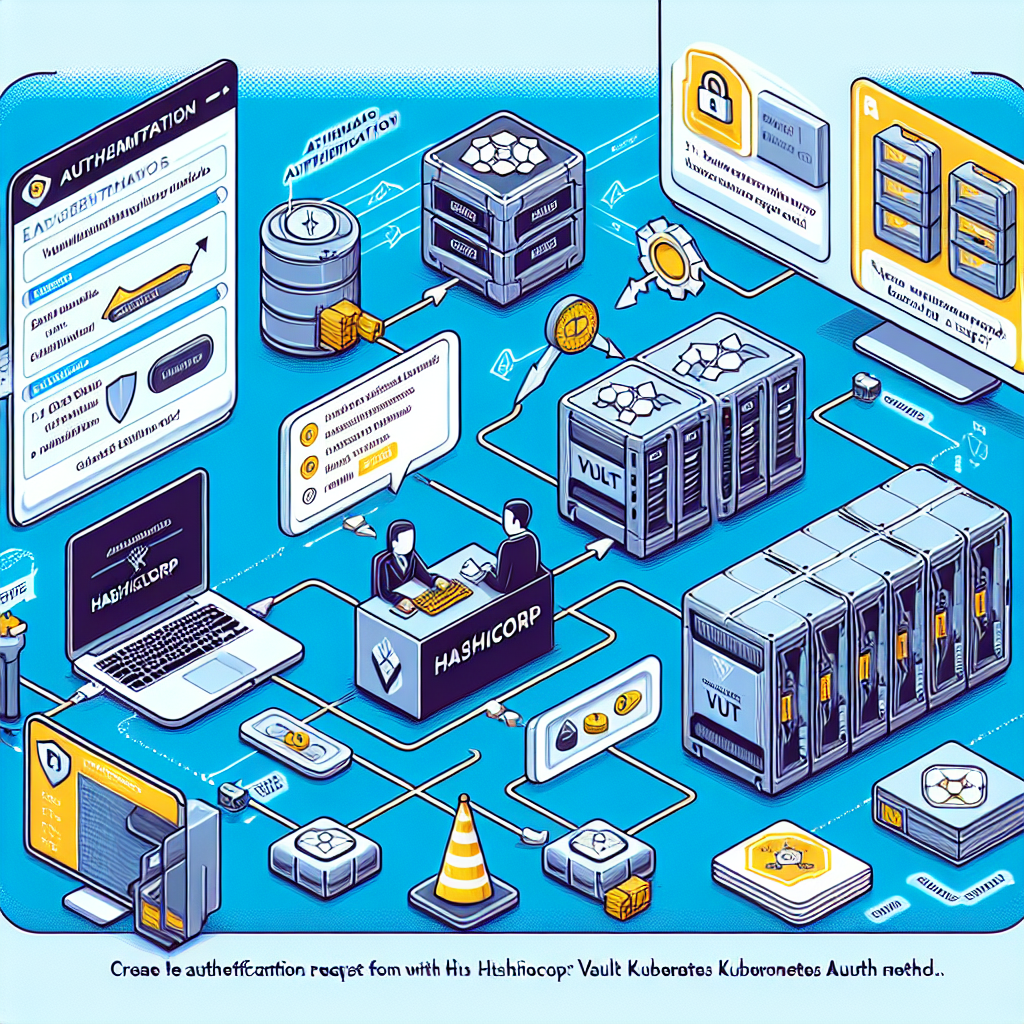Authentication with HashiCorp Vault Kubernetes Auth Method

As organizations adopt containerization and orchestration technologies like Kubernetes, managing secrets and authentication becomes a critical aspect of their infrastructure. HashiCorp Vault, a popular secrets management solution, provides robust authentication mechanisms to ensure secure access to sensitive data. One such authentication method is the HashiCorp Vault Kubernetes Auth Method, which leverages Kubernetes Service Account Tokens for authentication. In this blog post, we will explore the features and benefits of this authentication method and how it simplifies the integration of HashiCorp Vault into Kubernetes environments.
Understanding HashiCorp Vault Auth Methods
HashiCorp Vault incorporates auth methods as components that handle authentication and authorization tasks, assigning identities and policies to users. These auth methods enforce authentication during request processing. However, with external auth methods like Kubernetes, HashiCorp Vault delegates the authentication decisions to the relevant configured external service, in this case, Kubernetes.
Kubernetes Auth Method in HashiCorp Vault
The Kubernetes auth method in HashiCorp Vault enables authentication using Kubernetes Service Account Tokens. This approach streamlines the introduction of HashiCorp Vault tokens into Kubernetes Pods, making it convenient for applications running in a Kubernetes environment to authenticate and access secrets securely.
Authentication Process
When using the Kubernetes auth method, HashiCorp Vault interacts with the Kubernetes TokenReview API to validate the provided JWT (JSON Web Token). The validity of the token is checked during the initial authentication, as well as for subsequent token renewals. This means that tokens issued by HashiCorp Vault remain valid until renewal or user re-authentication occurs. The authentication process provides a seamless integration between HashiCorp Vault and Kubernetes, leveraging the security mechanisms inherent in Kubernetes Service Account Tokens.
Configuring Kubernetes for Vault Integration
To enable the Kubernetes auth method in HashiCorp Vault, certain configurations are required. Service Accounts used with this authentication method should have access to the Kubernetes TokenReview API. As Kubernetes follows Role-Based Access Control (RBAC), the Service Account needs to be granted permissions to access the TokenReview API. By configuring appropriate RBAC roles, organizations can ensure that the Kubernetes auth method functions smoothly and securely.
Example
On the HashiCorp Vault side, we can enable this feature by running the command below:
vault auth enable kubernetes
And you would receieve a message “Success! Enabled kubernetes auth method at: kubernetes/”. Then configured the roles, bound service account name, bound service account namespace as well as the policy.
On the kubernetes cluster side, below is a clusterrole binding you would need:
---
# This binding allows the deployed instance to authenticate clients
# through Kubernetes ServiceAccounts.
apiVersion: rbac.authorization.k8s.io/v1
kind: ClusterRoleBinding
metadata:
name: role-tokenreview-binding
roleRef:
apiGroup: rbac.authorization.k8s.io
kind: ClusterRole
name: system:auth-delegator
subjects:
- kind: ServiceAccount
name: <your_service_account>
namespace: <your_namespace>
Benefits of HashiCorp Vault Kubernetes Auth Method
-
Simplified Integration: By leveraging Kubernetes Service Account Tokens, the Kubernetes auth method reduces the complexity of integrating HashiCorp Vault with Kubernetes environments. Developers can easily authenticate and access secrets from within their Pods without the need for complex authentication logic.
-
Enhanced Security: Kubernetes Service Account Tokens provide a secure mechanism for authentication, as they are automatically rotated and managed by Kubernetes. By utilizing these tokens, HashiCorp Vault ensures that only authorized applications and users can access the secrets, strengthening the overall security posture of the infrastructure.
-
Centralized Secrets Management: With the Kubernetes auth method, organizations can centralize their secrets management in HashiCorp Vault while seamlessly integrating with Kubernetes. This enables teams to adhere to security best practices, such as rotating secrets regularly, auditing access, and enforcing fine-grained access controls.
Conclusion
The HashiCorp Vault Kubernetes Auth Method offers a streamlined and secure approach to authenticate and access secrets within Kubernetes environments. By leveraging Kubernetes Service Account Tokens and integrating with the Kubernetes TokenReview API, HashiCorp Vault simplifies the authentication process and provides centralized secrets management. This authentication method empowers organizations to enhance their security posture while leveraging the benefits of both HashiCorp Vault and Kubernetes in a cohesive manner.